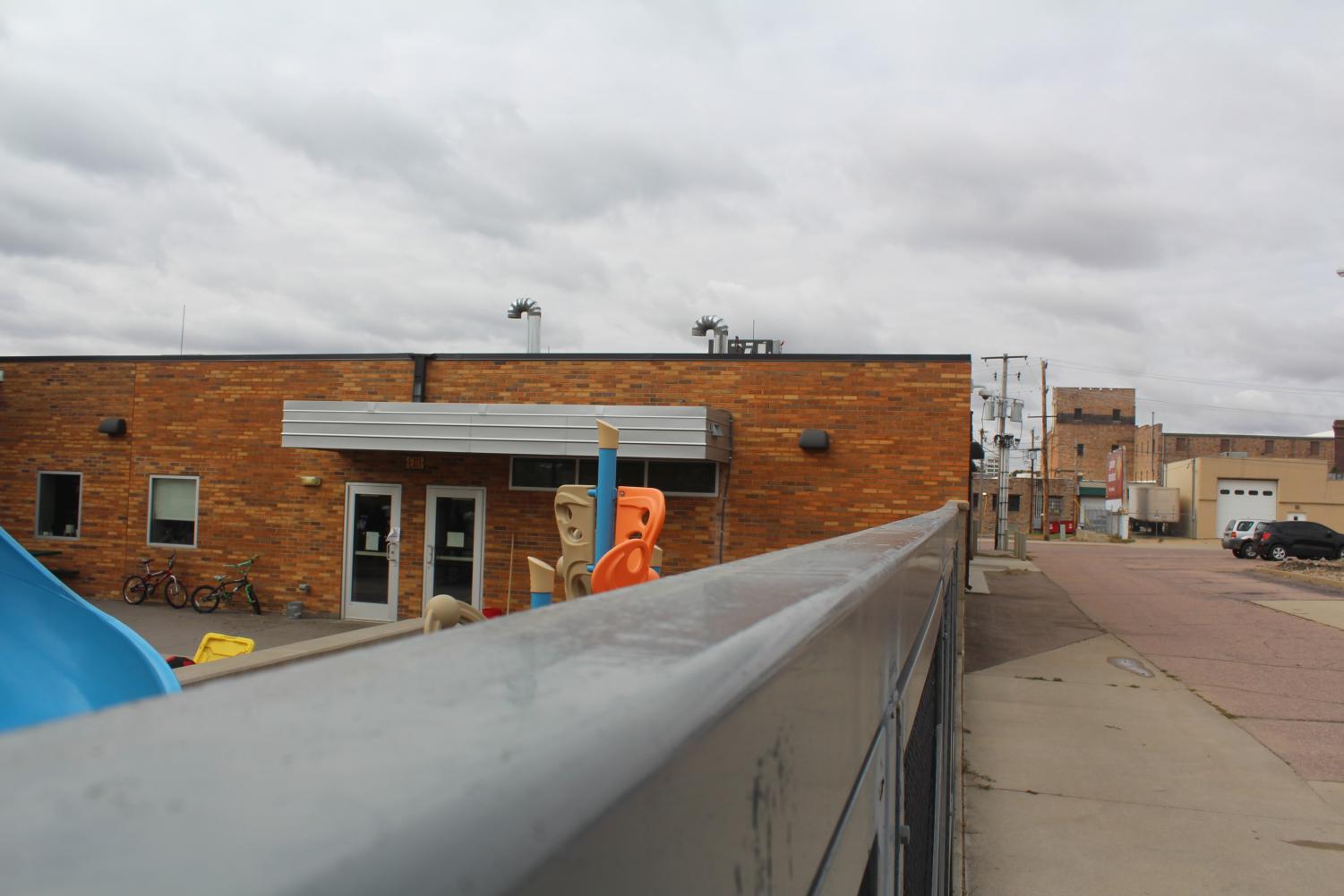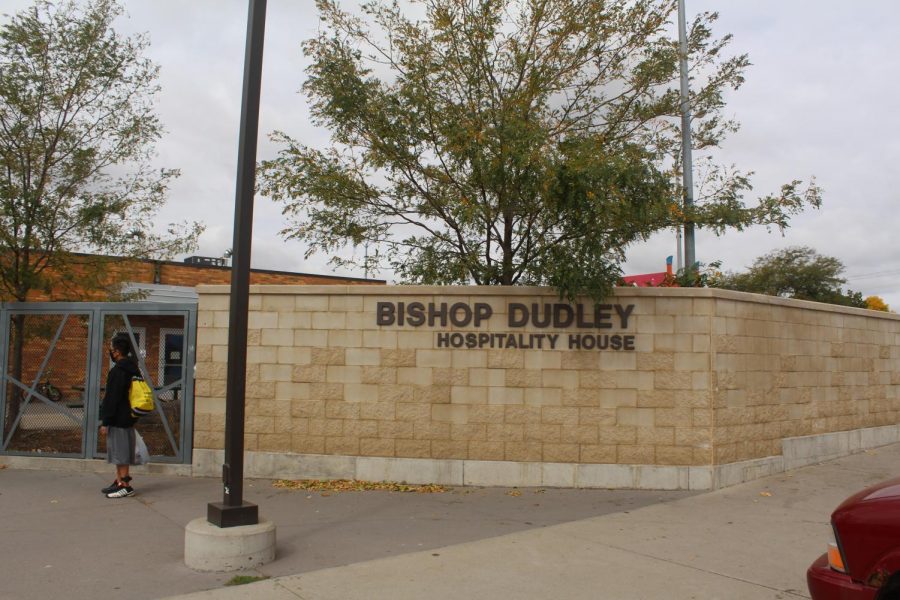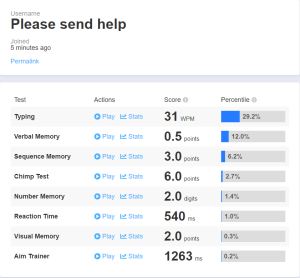Homelessness in Sioux Falls
According to the Bishop Dudley’s website, they have served 1,723 individuals, 57 families and 107 children since opening in 2019.
October 22, 2020
I arrived at the Bishop Dudley Hospitality House selfishly nervous about what I would find beyond the back door. Subconsciously, my privilege as a middle class, financially stable high school student had caught up to me. I watched as a flock of people from The Banquet, a local soup kitchen, made their way to the front gates of the shelter, all carrying white styrofoam dinner trays. Some also held the hands of their children, some carried duffle bags and some were smoking cigarettes; but all were making their way to the same place, where each guest would be greeted by name.
The Bishop Dudley Hospitality House is shaped like a horseshoe. On one side there is a women’s center; parallel to that is the men’s center and in the back there are family rooms. In between, one could find the kitchen, laundry rooms and medical rooms. Towards the end of my tour of the shelter, I saw a man in the outdoor men’s center that was playing cornhole alone; my attention was immediately brought to the fact that he was wearing some of the longest shorts I’d seen in my life that could arguably just be pants. I approached this man and told him about my legendary track record at cornhole. Travis introduced himself while shaking my hand and immediately noticed the camera wrapped around my neck. He told me about his sister who loved photography, saying that if there was one thing in the world that he could do again, it would be to take photos with his sister down south one more time. I watched as tears formed in his eyes while he proceeded to give me pointers on finding the perfect angle for not only my camera but also for my cornhole toss.
While walking through the hallways, all I could notice were the endless bulletin boards overflowing with fliers. Full of schedules, nurse visits, resume building sessions, businesses that were hiring, shuttles and other forms of transportation, church services, food donations and sign up sheets for the laundry room; I initially thought this showed how many available opportunities there were but I later realized that I was ignorant to the true complexity of escaping homelessness and poverty.
“For many people, homelessness is a tragedy,” said Madeline Shields, the Executive Director of The Bishop Dudley Hospitality House. “There are people with mental illnesses, and they may be doing great for months or even years while they stay on their medication and then something happens or they run out of money and can’t afford their medication, then they lose their house, then they have a poor rental history because they couldn’t pay their rent for a couple of months. Then it starts all over. It’s a vicious cycle that is very very difficult to make your way out of.”
The overall homeless population on a single night represents 0.2 percent of the U.S. population or 17 people per 10,000 people. According to data from the U.S. The Department of Housing and Urban Development, Sioux Falls had 219 people who qualified as homeless for every 100,000 residents in the city in 2018. The Augustana Research Institute says efforts are failing in response to the once created goal of eradicating homelessness in Sioux Falls, SD.
“Compared to other communities, people experiencing homelessness in Sioux Falls are more likely to be sheltered than unsheltered,” the report said. “This finding is consistent with findings of the capacity of Sioux Falls to house people experiencing homelessness.”
Homelessness and poverty also affect students at LHS. Amber Pollman, a social worker at LHS, addresses the process of student homelessness at the high school level and opportunities available for their peers to help.
“We first start by identifying them as homeless, we provide transportation support, referrals to all different areas of the community and are able to immediately provide free school lunch with no paperwork,” said Pollman. “Lincoln has the Club 17 closet, which signifies the 17 hours where students are not at school. Students can donate school supplies, new hygienic products and new clothes that will later be distributed to struggling students at LHS.”
One of the many contributing factors to the seemingly endless cycle of homelessness and poverty is the stigma surrounding the lower class. These stigmas can be at the employment level and also social level when it comes to our perception of the homeless population.
“Absolutely [the homeless] are stigmatized but I don’t fault people for being afraid of what they don’t know,” said Shields. “In our minds, we see them as unpredictable but I challenge people to sit down and have a conversation and learn very quickly that there is so much more that we have in common with one another than differences. Volunteering is a gift to whoever seeks it. You will leave so happy because you were able to come and make a difference in someone else’s life.”

Eradicating homelessness and efforts to do so all begin with the deconstruction of stigmas around homelessness. Homelessness is a cycle that the majority of people do not choose to be a part of. YOU can take action; whether that be by assisting guests at a shelter with resumes or donating to Club 17, take advantage of the endless opportunities to help those around you. On the off chance that we attempt to understand our previous biases and we come with an open hand and mind, at that point, and only that point, will we start to comprehend the plight of individuals who are trapped in an endless cycle of poverty.








